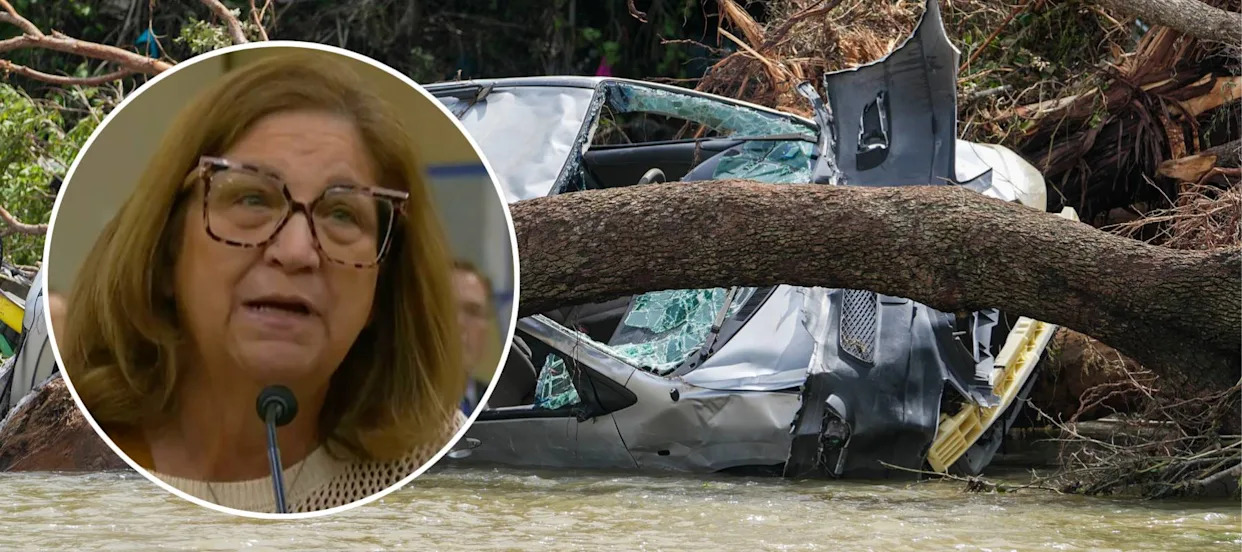
As a 26-foot wall of water surged down the Guadalupe River, wiping out entire homes, the only official warning was a 4:39 a.m. text message stating “Evacuate: Wildfire.”
So says Auburn Gallagher, a 25-year resident of flood-ravaged Sandy Creek, describing a chaotic scene with little warning and no help.
Don't miss
Thanks to Jeff Bezos, you can now become a landlord for as little as $100 — and no, you don't have to deal with tenants or fix freezers. Here's how
I'm 49 years old and have nothing saved for retirement — what should I do? Don't panic. Here are 5 of the easiest ways you can catch up (and fast)
Want an extra $1,300,000 when you retire? Dave Ramsey says this 7-step plan ‘works every single time’ to kill debt, get rich in America — and that ‘anyone’ can do it
“Nobody came. No fire. No EMS. No sheriff. Nobody came for us. Nobody,” Gallagher told a July 31 hearing by the Texas Senate and House’s select committees in Kerr County, the area most devastated by the recent floods.
Gallagher says it was a neighbor who warned her at 6 a.m. on July 5 as flood debris began tearing through the fence on her property. Two of her neighbors’ homes were destroyed in a scene she described as a “warzone.”
While many survivors are outraged by what they call a meek response from officials, some experts argue that a faster alert system may have done little to stop the death and destruction that unfolded.
Left in the dark
At the hearing, lawmakers heard conflicting accounts from residents and officials. Multiple witnesses testified they received no advance warning before the floodwaters surged.
With poor cell service and no running water, Gallagher turned to social media to plead for help. Her Facebook post caught the attention of Melanie Strong, a resident from a nearby town who quickly stepped in.
Strong testified that residents were “left in the dark and they did not have resources to dig themselves out.” She urged her partner, a lieutenant with the Austin Capital Region, to drive out to Sandy Creek to see the devastation firsthand.
Since he is typically looped into emergency alerts, she asked whether he had received any notifications — an email, a call, anything. He hadn’t.
When they arrived, they encountered a lone sheriff’s deputy, one of the only officers assigned to cover the entire Sandy Creek area during the flood. He told them he had fielded more than 50 calls for help but was unable to respond to most.
“Their 911 calls went unanswered,” Strong stated.
Read more: Nervous about the stock market in 2025? Find out how you can access this $1B private real estate fund (with as little as $10)
The flooding, which struck over the July 4 holiday, killed at least 135 people — including 37 children. While the National Weather Service issued a general flood watch on July 3, it wasn’t until 4 a.m. on July 4 that it sent a more urgent alert, warning of a “particularly dangerous situation.”
Many residents, including Gallagher, are questioning why no sirens sounded and why local authorities failed to implement stronger warning systems that could have saved lives. Kerr County considered installing a flood alert system along the Guadalupe River nearly a decade ago but rejected it due to cost concerns.
What's the real failure?
While better warning systems might have bought residents more time, experts say the real failure wasn’t just in communication — it was in preparation.
William Rector, director of the Upper Guadalupe River Authority, told lawmakers the real issue was in the absence of flood mitigation infrastructure altogether.
The region has no diversion dams to help slow the surge of water pouring down the river. Rector emphasized that these physical barriers, along with non-structural strategies like zoning and long-term planning, are essential tools to reduce flood risks and limit the damage.
Referencing the tragedy at Camp Mystic, where several lives were lost, Rector said a warning system likely wouldn’t have made a difference. The floodwaters moved too quickly.
“There was just no time for a warning system. Flood mitigation is the answer to flash floods,” Rector said on the panel.
Over the past decade, Texas has reportedly relinquished $225 million in federal grant money it has been provided for disaster prevention. It also hasn’t spent $505 million of the $820 million it received after Hurricane Harvey hit years ago.
What to read next
Robert Kiyosaki warns of a 'Greater Depression' coming to the US — with millions of Americans going poor. But he says these 2 'easy-money' assets will bring in ‘great wealth’. How to get in now
Here are 5 simple ways to grow rich with real estate if you don’t want to play landlord. And you can even start with as little as $10
Rich, young Americans are ditching the stormy stock market — here are the alternative assets they're banking on instead
Here are 5 ‘must have’ items that Americans (almost) always overpay for — and very quickly regret. How many are hurting you?
Stay in the know. Join 200,000+ readers and get the best of Moneywise sent straight to your inbox every week for free. Subscribe now.
This article provides information only and should not be construed as advice. It is provided without warranty of any kind.








Comments